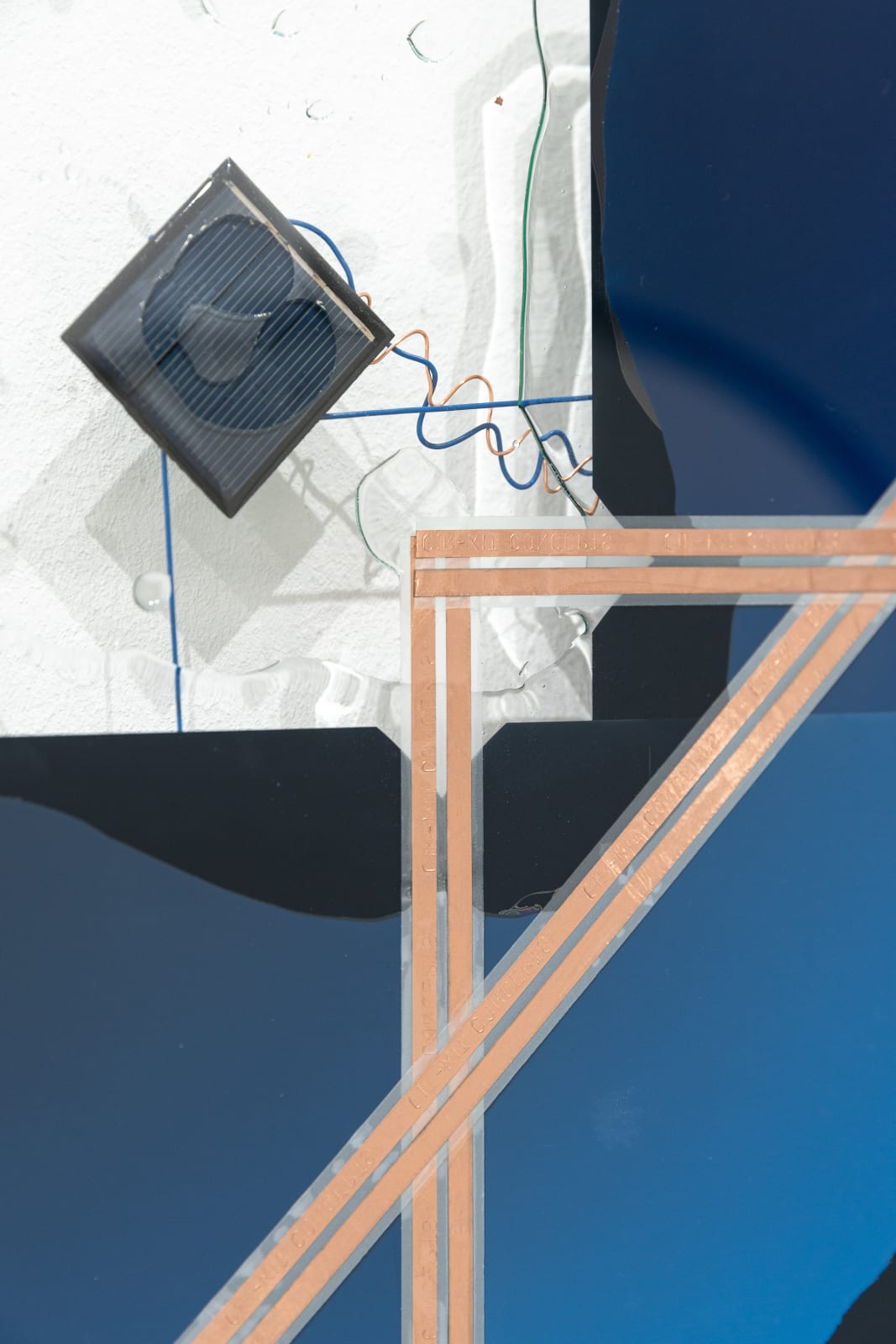-
artworks / works
Haroon Mirza
Ogdoad iV - Terence McKenna, 2023Photovoltaic cells, copper tape, polyurethane resin, LED, laser jet print and gold leaf on acetate, wire, aluminum tape on glass, and Solar Cell Glass Work62 x 62 cm
24 3/8 x 24 3/8 inchesCopyright The ArtistPhoto: Dirk TackeFurther images
In der Werkserie „ogdoad“ vereint Haroon Mirza Ritual und Technik durch das Aufgreifen von Mustern und Formen von Mandalas und der Kombination mit technoiden Elementen wie Solarzellen, Kupferband und LED...In der Werkserie „ogdoad“ vereint Haroon Mirza Ritual und Technik durch das Aufgreifen von Mustern und Formen von Mandalas und der Kombination mit technoiden Elementen wie Solarzellen, Kupferband und LED hinter Glas und bringt so Bezüge zwischen Technologie, Natur und Bewusstsein zusammen.
Der Titel verweist auf die ägyptische Mythologie in der „Ogdoad“ acht Gottheiten beschreibt, die sich aus vier weiblichen und vier männlichen Personen zusammensetzen und deren polytheistischen Gedanken Mirza im Rahmen seiner Beschäftigung mit energy und power interessieren: „Because in all of life and in the universe, ultimate power doesn’t come from just one source, it’s a combination of two or more things. Philosophically this is interesting, because this negates monotheism“.
Die Form des achtzackigen Sterns ergibt sich durch die Komposition und Kombination der Solarzellen – der Stern hat als religiöses Zeichen eine kulturelle Präsenz vom Altertum bis in die Gegenwart in den unterschiedlichsten Kontexten und symbolisiert häufig Transzendenz.
In der Mitte Terence McKenna, ein amerikanischer Ethnobotaniker und Mystiker, der sich für den verantwortungsvollen Umgang mit natürlich vorkommenden psychedelischen Pflanzen einsetzte und in diesem Zusammenhang über die theoretischen Ursprünge des menschlichen Bewusstseins schrieb.
In the series of works "ogdoad" Haroon Mirza combines ritual and engineering by taking up patterns and forms of mandalas and combining them with technoid elements such as solar cells, copper tape and LED behind glass, thus bringing together references between technology, nature and consciousness.
The title refers to Egyptian mythology in which "Ogdoad" describes eight deities consisting of four female and four male persons and whose polytheistic thoughts interest Mirza in the context of his preoccupation with energy and power: "Because in all of life and in the universe, ultimate power doesn't come from just one source, it's a combination of two or more things. Philosophically this is interesting, because this negates monotheism".
The shape of the eight-pointed star results from the composition and combination of the solar cells - as a religious sign, the star has had a cultural presence from ancient times to the present in a wide variety of contexts and often symbolizes transcendence.
In the center, Terence McKenna, an American ethnobotanist and mystic who advocated the responsible use of naturally occurring psychedelic plants and wrote about the theoretical origins of human consciousness in this context.
15of 15







